
The Game Boy Advance (GBA) is a 32-bit handheld game console developed, manufactured and marketed by Nintendo as the successor to the Game Boy Color. It was released in Japan on March 21, 2001, in North America on June 11, 2001, in the PAL region on June 22, 2001, and in mainland China as iQue Game Boy Advance on June 8, 2004. The GBA is part of the sixth generation of video game consoles. The original model was followed in 2003 by the Game Boy Advance SP, a redesigned model with a frontlit screen and clamshell form factor. A newer revision of the SP with a backlit screen was released in 2005. A miniaturized redesign, the Game Boy Micro, was released in September 2005.

The Virtual Boy is a 32-bit tabletop portable video game console developed and manufactured by Nintendo. Released in 1995, it was marketed as the first console capable of displaying stereoscopic "3D" graphics. The player uses the console like a head-mounted display, placing the head against the eyepiece to see a red monochrome display. The games use a parallax effect to create the illusion of depth. Sales failed to meet targets, and Nintendo ceased distribution and game development in 1996, having released only 22 games for the system.

The 64DD is a magnetic floppy disk drive peripheral for the Nintendo 64 game console developed by Nintendo. It was announced in 1995, prior to the Nintendo 64's 1996 launch, and after numerous delays was released in Japan on December 13, 1999. The "64" references both the Nintendo 64 console and the 64MB storage capacity of the disks, and "DD" is short for "disk drive" or "dynamic drive".
Nintendo Space World, formerly named Shoshinkai and Famicom Space World, was an annual video game trade show hosted by Nintendo from 1989 to 2001. Its three days of high-energy party atmosphere was the primary venue for Nintendo and its licensees to announce and demonstrate new consoles, accessories, and games. Anticipated and dissected each year with hype and exclusivity, it was a destination for the international video game press, with detailed developer interviews and technology demos.

Adventures of Lolo is a puzzle video game released in 1989 by HAL Laboratory for the Nintendo Entertainment System. It is a compilation of puzzles from Eggerland: Meikyū no Fukkatsu and Eggerland: Sōzō he no Tabidachi. It is the fifth game in the Eggerland series, the third one released in Europe, but the first one released in North America. It was available on the Wii's and Wii U's Virtual Console in North America and in PAL regions, as well as on the Nintendo Switch Online's virtual Nintendo Entertainment System library.

Mario Clash is a video game produced by Nintendo in 1995 for the Virtual Boy. It is the first stereoscopic 3D Mario game, and a 3D reimagining of Mario Bros. Reception for the game was mixed.

Virtual Boy Wario Land is a platforming video game developed and published by Nintendo for the Virtual Boy game system in 1995. It stars Wario, a treasure hunter who must find treasure and fight enemies to progress. Wario can jump and charge with his shoulder as basic techniques, and equip special hats to gain things such as fire breathing and bull horns. He has the ability to enter the background at certain points, making use of the console's stereoscopic 3D effect. It was developed by Nintendo R&D1, containing a large portion of its staff, and features the red-and-black color scheme that is standard for Virtual Boy releases.
The Virtual Console is a line of downloadable video games for Nintendo's Wii and Wii U home video game consoles and the Nintendo 3DS family of systems.

Dragon Hopper is an unreleased action-adventure video game that was in development by Intelligent Systems and planned to be published by Nintendo on a scheduled 1996 release date exclusively for the Virtual Boy. Along with Japan System Supply's Bound High!, it would have been one of the first second-generation titles for the system if not for the poor critical and commercial reception it garnered that led to its planned relaunch being discontinued, which also led to the game's cancellation in the process.
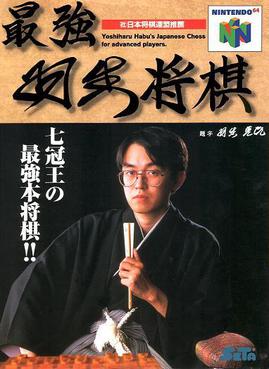
Saikyō Habu Shōgi is a Japanese virtual board game for the Nintendo 64 developed and published by Seta. It was released exclusively in Japan on June 23, 1996, as one of the Nintendo 64's three Japanese launch games alongside Super Mario 64 and Pilotwings 64. It was the only launch game to use the Controller Pak. The game's "special guest" is the shogi player Yoshiharu Habu, who won all seven major shogi championships the year of the game's release. Though it was anticipated that the game would be a bestseller and a major showcase for the Nintendo 64's processing power, sales were not high, with only about one copy accompanying every one hundred consoles sold at the system launch. Seta released an indirect sequel for the Nintendo 64 titled Morita Shogi 64 as part of the Morita Shogi series, which was announced at Nintendo Space World in 1996, and later a direct sequel Kosoku Tanigawa Shogi for the PlayStation 2.

Morita Shogi 64 (森田将棋64) is a Japanese virtual board game for the Nintendo 64. It was released only in Japan in 1998.
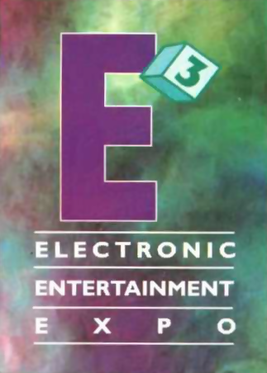
The Electronic Entertainment Expo 1995, commonly known as E3 1995, was the first Electronic Entertainment Expo held. The event took place at the Los Angeles Convention Center from May 11–13, 1995, with 50,000 total attendees. Highlights of the 1995 show include Sony's announcement of the PlayStation's release date and pricing, Sega's surprise launch of the Sega Saturn, and Nintendo's showcase of the Virtual Boy console.
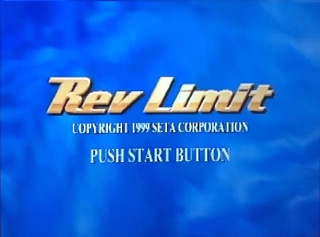
Rev Limit is an unreleased sim racing video game that was in development and planned to be published by Seta Corporation in May 1998 for the Nintendo 64. It was also intended to be the first arcade title to use Seta's own Aleck 64 arcade board, and was planned for the 64DD as well. It was one of the earliest original third-party racing titles to be announced for the system. In the game, players compete against either computer-controlled vehicles or other human opponents across several tracks of varying thematic in order to reach first place and advance to the next course.
Zero Racers is an unreleased racing video game that was in development and planned to be published by Nintendo on a scheduled 1996 release date exclusively for the Virtual Boy. Had it been released prior to cancellation, it would have become the first F-Zero installment to have featured 3D graphics. In the game, players can choose between one of four characters, each with their respective hovercar and race against AI-controlled characters in fifteen tracks divided into three leagues. The title was previewed in video game magazines but it was ultimately shelved due to the failure of the Virtual Boy itself, despite being completed for release.

V-Tetris is a 1995 puzzle video game developed by Locomotive and published by Bullet-Proof Software in Japan for the Virtual Boy. Its gameplay involves the player clearing horizontal lines by moving pieces of different shapes that descend onto the playing field by filling empty spaces in order to make completed lines disappear and gain points across three modes of play.
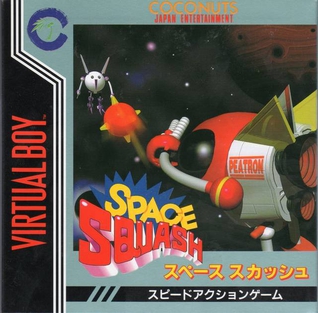
Space Squash is a 1995 sports video game developed by Tomcat System and published by Coconuts Japan Entertainment in Japan for the Virtual Boy. The player assumes the role of a robot called Peatron to defeat a group of space pirates that have taken over the planet Animal Star on a intergalactic squash tournament. Its gameplay involves Peatron ricocheting a ball across a three-dimensional court and defeating the opponent on the other side in order to proceed further in the tournament.

Virtual Lab is a 1995 puzzle video game developed by Nacoty and published by J-Wing in Japan for the Virtual Boy. Its gameplay is reminiscent of Pipe Dream and the Game Boy title Chiki Chiki Tengoku, and involves the player moving worm pieces of different shapes that descend onto the playing field by linking or shutting their open orifices together to make them disappear and gain points across multiple levels.

Virtual Fishing is a 1995 fishing video game developed by Locomotive Corporation and published by Pack-In-Video in Japan for the Virtual Boy. The player participates in a series of fishing tournaments at various different locations by catching a large number of fishes with a high average weight under a time limit. Its gameplay consists of two segments and features two additional modes of play.
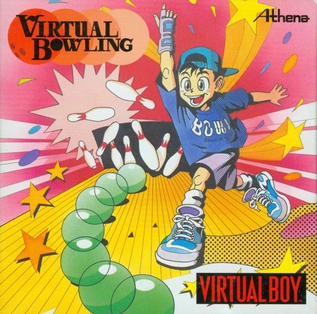
Virtual Bowling is a 1995 sports video game developed and published by Athena in Japan for the Virtual Boy. In the game, the player participates in a series of bowling tournaments consisting of four 10-frame matches at various alleys against computer-controlled opponents, in order to obtain a high score and progress further. Its gameplay, featuring three modes of play, is viewed from a first-person perspective.


















